#Dublin V Tipperary
Text
#OTD in 1920 – Irish War of Independence | In Dublin, 31 people are killed in what became known as ‘Bloody Sunday’.
A day of carnage in Dublin in an increasingly bitter and bloody Irish War of Independence; in total, 31 people were killed. Early in the day, Michael Collins ‘Squad’ and the Dublin Brigade wipes out much of British Intelligence in Dublin. Hours later, British troops take horrible revenge.
In a superbly executed guerilla operation, Michael Collins dispatched his agents to assassinate fourteen…

View On WordPress
#Auxilliaries#Bloody Sunday#Croke Park#Dublin Brigade#Dublin Castle#Dublin V Tipperary#England#Ireland#Irish History#Irish War of Independence#Michael Collins#Michael Hogan#RIC#The Cairo Gang#The Squad
18 notes
·
View notes
Text
Allianz Hurling League Roinn 1b - Dublin V Tipperary - Dublin, Ireland | 3 Feb, 2024.
Find out more / Buy Verified Tickets.
0 notes
Text
6日午後5時までにすべての投票表紙を配達で
https://b.hatena.ne.jp/entry/www.osullivanconsulting.ie/mol/irla-Li-v-Tip-gaa-ie.html
https://b.hatena.ne.jp/entry/www.osullivanconsulting.ie/mol/Li-v-Tip-gaa-ie.html
https://b.hatena.ne.jp/entry/www.osullivanconsulting.ie/mol/Li-v-Tip-gaa-one.html
https://b.hatena.ne.jp/entry/www.osullivanconsulting.ie/mol/Li-v-Tip-gaa.html
tp://www.osullivanconsulting.ie/prefer/video-Westmeath-v-Dublin-liv-4k02.html
http://www.osullivanconsulting.ie/prefer/video-Westmeath-v-Dublin-liv-4k03.html
http://www.osullivanconsulting.ie/prefer/video-Westmeath-v-Dublin-liv-4k04.html
http://www.osullivanconsulting.ie/prefer/video-Westmeath-v-Dublin-liv-4k05.html
http://www.osullivanconsulting.ie/prefer/video-Westmeath-v-Dublin-liv-4k06.html
http://www.osullivanconsulting.ie/prefer/video-Westmeath-v-Dublin-liv-4k07.html
http://www.osullivanconsulting.ie/prefer/video-Westmeath-v-Dublin-liv-4k08.html
http://www.osullivanconsulting.ie/prefer/video-Westmeath-v-Dublin-liv-4k09.html
http://www.osullivanconsulting.ie/prefer/video-Westmeath-v-Dublin-liv-4k10.html
http://www.osullivanconsulting.ie/prefer/video-Offaly-v-Derry-liv-4k01.html
http://www.osullivanconsulting.ie/prefer/video-Offaly-v-Derry-liv-4k02.html
http://www.osullivanconsulting.ie/prefer/video-Offaly-v-Derry-liv-4k03.html
http://www.osullivanconsulting.ie/prefer/video-Offaly-v-Derry-liv-4k04.html
http://www.osullivanconsulting.ie/prefer/video-Offaly-v-Derry-liv-4k05.html
http://www.osullivanconsulting.ie/prefer/video-Offaly-v-Derry-liv-4k06.html
http://www.osullivanconsulting.ie/prefer/video-Monaghan-v-Tyrone-liv-4k01.html
http://www.osullivanconsulting.ie/prefer/video-Monaghan-v-Tyrone-liv-4k02.html
http://www.osullivanconsulting.ie/prefer/video-Monaghan-v-Tyrone-liv-4k03.html
http://www.osullivanconsulting.ie/prefer/video-Monaghan-v-Tyrone-liv-4k04.html
http://www.osullivanconsulting.ie/prefer/video-Monaghan-v-Tyrone-liv-4k05.html
http://www.osullivanconsulting.ie/prefer/video-Monaghan-v-Tyrone-liv-4k06.html
http://www.osullivanconsulting.ie/prefer/video-Longford-v-Leitrim-liv-4k01.html
http://www.osullivanconsulting.ie/prefer/video-Longford-v-Leitrim-liv-4k02.html
http://www.osullivanconsulting.ie/prefer/video-Longford-v-Leitrim-liv-4k03.html
http://www.osullivanconsulting.ie/prefer/video-Longford-v-Leitrim-liv-4k04.html
http://www.osullivanconsulting.ie/prefer/video-Longford-v-Leitrim-liv-4k05.html
http://www.osullivanconsulting.ie/prefer/video-Longford-v-Leitrim-liv-4k06.html
http://www.osullivanconsulting.ie/prefer/video-Limerick-v-Tipperary-liv-4k01.html
http://www.osullivanconsulting.ie/prefer/video-Limerick-v-Tipperary-liv-4k02.html
http://www.osullivanconsulting.ie/prefer/video-Limerick-v-Tipperary-liv-4k03.html
http://www.osullivanconsulting.ie/prefer/video-Limerick-v-Tipperary-liv-4k04.html
http://www.osullivanconsulting.ie/prefer/video-Limerick-v-Tipperary-liv-4k05.html
http://www.osullivanconsulting.ie/prefer/video-Limerick-v-Tipperary-liv-4k06.html
http://www.osullivanconsulting.ie/prefer/video-Limerick-v-Tipperary-liv-4k07.html
http://www.osullivanconsulting.ie/prefer/video-Dublin-v-Cork-liv-4k01.html
http://www.osullivanconsulting.ie/prefer/video-Dublin-v-Cork-liv-4k02.html
http://www.osullivanconsulting.ie/prefer/video-Dublin-v-Cork-liv-4k03.html
http://www.osullivanconsulting.ie/prefer/video-Dublin-v-Cork-liv-4k04.html
http://www.osullivanconsulting.ie/prefer/video-Dublin-v-Cork-liv-4k05.html
http://www.osullivanconsulting.ie/prefer/video-Dublin-v-Cork-liv-4k06.html
http://www.osullivanconsulting.ie/prefer/video-Dublin-v-Cork-liv-4k07.html
http://www.osullivanconsulting.ie/prefer/video-Dublin-v-Cork-liv-4k08.html
http://www.osullivanconsulting.ie/prefer/video-Dublin-v-Cork-liv-4k09.html
http://www.osullivanconsulting.ie/prefer/video-Laois-v-Clare-liv-4k01.html
http://www.osullivanconsulting.ie/prefer/video-Laois-v-Clare-liv-4k02.html
http://www.osullivanconsulting.ie/prefer/video-Laois-v-Clare-liv-4k03.html
http://www.osullivanconsulting.ie/prefer/video-Laois-v-Clare-liv-4k04.html
http://www.osullivanconsulting.ie/prefer/video-Laois-v-Clare-liv-4k05.html
http://www.osullivanconsulting.ie/prefer/video-Laois-v-Clare-liv-4k06.html
http://www.osullivanconsulting.ie/prefer/video-Laois-v-Clare-liv-4k07.html
http://www.osullivanconsulting.ie/prefer/video-Cavan-v-Antrimy-liv-4k01.html
http://www.osullivanconsulting.ie/prefer/video-Cavan-v-Antrimy-liv-4k02.html
http://www.osullivanconsulting.ie/prefer/video-Cavan-v-Antrimy-liv-4k03.html
http://www.osullivanconsulting.ie/prefer/video-Cavan-v-Antrimy-liv-4k04.html
http://www.osullivanconsulting.ie/prefer/video-Cavan-v-Antrimy-liv-4k05.html
http://www.osullivanconsulting.ie/prefer/video-Cavan-v-Antrimy-liv-4k06.html
http://www.osullivanconsulting.ie/prefer/video-Cavan-v-Antrimy-liv-4k07.html
http://www.osullivanconsulting.ie/prefer/video-Carlow-v-Meath-liv-4k01.html
http://www.osullivanconsulting.ie/prefer/video-Carlow-v-Meath-liv-4k02.html
http://www.osullivanconsulting.ie/prefer/video-Carlow-v-Meath-liv-4k03.html
http://www.osullivanconsulting.ie/prefer/video-Carlow-v-Meath-liv-4k04.html
http://www.osullivanconsulting.ie/prefer/video-Carlow-v-Meath-liv-4k05.html
http://www.osullivanconsulting.ie/prefer/video-Carlow-v-Meath-liv-4k06.html
http://www.osullivanconsulting.ie/mol/irla-Li-v-Tip-gaa-ie.html
http://www.osullivanconsulting.ie/mol/Li-v-Tip-gaa-ie.html
http://www.osullivanconsulting.ie/mol/Li-v-Tip-gaa-one.html
http://www.osullivanconsulting.ie/mol/Li-v-Tip-gaa.html
https://humboldttravel.co.uk/rextv/Vnewo_Man-United-v-Everton-00000-ga05703118.html
https://humboldttravel.co.uk/rextv/Vnewo_Man-United-v-Everton-00000-ga05703119.html
https://humboldttravel.co.uk/rextv/Vnewo_Man-United-v-Everton-00000-ga05703110.html
https://humboldttravel.co.uk/rextv/Vnewo_Man-United-v-Everton-00000-ga05703111.html
https://humboldttravel.co.uk/ie/La-v-Cl-gaa1.html
https://humboldttravel.co.uk/ie/v-ideo-Laois-v-Clare.html
https://humboldttravel.co.uk/ie/vi-deos-La-v-Cl-gaa-ie.html
http://www.osullivanconsulting.ie/mol/irla-Li-v-Tip-gaa-ie.html
http://www.osullivanconsulting.ie/mol/Li-v-Tip-gaa-ie.html
http://www.osullivanconsulting.ie/mol/Li-v-Tip-gaa-one.html
http://www.osullivanconsulting.ie/mol/Li-v-Tip-gaa.html
1 note
·
View note
Text
It Seems Like Nothing Changes
Paul Cussen
June 1919

In June 1919 the Cork Furniture Store, which had moved from Merchant Street to a new premises on Winthrop Street, took over London House on Saint Patrick’s Street and expanded to sell ladies clothes. The firm was owned by William Roche from Killavullen.

The Ford building on the marina covered a floor area of 330,000 square feet, just over 7.5 acres. The company employed 1,800 workers. John O’Neill, who joined Ford in 1919 and later became Managing Director of the plant (in 1932), described the plant as being ‘ahead of anything else in Europe’ in terms of layout and equipment.
In late June the lease on the Cork National Shell Factory was taken over from the Corporation of Cork by Richard Woodhead, acting on behalf of the Ford Company. In the 1930s it was leased to the Lee Motor Company.
Cork hurlers changed from blue jerseys with a large saffron C across the chest after British forces raided the County Board offices in Cook Street and confiscate their kits.

In June 1919 Michael Collins was made president of the IRB (Irish Republician Brotherhood).
Terence MacSwiney led an abortive raid to gain arms and ammunition at the Killeagh air ship base, a facility of the Royal Naval Air Service.
The 2nd Battalion of the Royal Munster Fusiliers remained in France until June 1919 when they returned to England.
From January to June 198 British soldiers in Ireland died: 118 from influenza/pneumonia, 55 died from other natural causes, 6 died from firearms accidents, 15 from accidents not involving firearms and 4 from suicide.
Martin Doyle, originally from New Ross in Wexford, received his Victoria Cross from King George V at Buckingham Palace. In October 1920 he joined the IRA in East Clare acting as an intelligence officer.
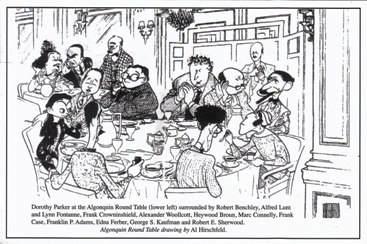
"The Vicious Circle" gathered at the Algonquin for the first time as the result of a practical joke carried out by theatrical press agent John Peter Toohey. It is only later, with their numbers growing, that they move to the now famous round table.

1 June
de Valera embarks on his tour of the USA with three aims:
· to ask for official recognition of the Irish Republic,
· to obtain a loan to finance the work of the new government, and
· to secure the support of the American people for the republic
2 June
New York City night watchman William Boehner is the only fatality as eight bombs detonate in eight cities across America. Each of the bombs is delivered with several copies of a pink flyer, titled "Plain Words", that read:
War, Class war, and you were the first to wage it under the cover of the powerful institutions you call order, in the darkness of your laws. There will have to be bloodshed; we will not dodge; there will have to be murder: we will kill, because it is necessary; there will have to be destruction; we will destroy to rid the world of your tyrannical institutions.
The bombings are carried out by Italian anarchist followers of Luigi Galleani.

3 June
Private Peter Asher dies of pneumonia at the military hospital in Buttevant.
Today’s Manchester Guardian review of Chekov’s The Seagull says:
“The Seagull” is a low-spirited play, and the sharpness of tragedy in it is blunted by Tchekov’s (sic) satire and irrelevances of other kinds. Tchekov, as we know from his stories, is a genial soul, and one missed somehow the feeling of sincerity in the climax to-day.
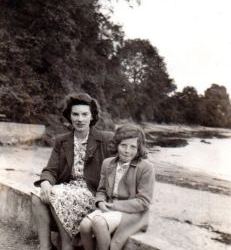
6 June
June Huband (who used the nom de plume Helen Forrester) is born in Hoylake on Merseyside (d.2011)
The United States Senate pass a resolution asking for the delegation appointed by Dáil Éireann to be given a hearing at the Paris Peace Conference, and expressing sympathy with the “aspirations of the Irish people for a government of their own choice”.
5-7 June
600-700 Armenian civilians are murdered by armed ethnic Azeri and Kurdish irregulars and Azerbaijani soldiers in the Khaibalikend massacre.

7 June
The Sette Giugno riots occur in Malta, as a crowd of thousands are shot at by British soldiers. Four die and over 50 are wounded in protests challenging the British presence on the island.
8 June
Constantine Fitzgibbon is born in The United States (d. 1983)
Coslett Herbert Waddell dies (b. 1858)
9 June
The City of Winnipeg Police Commission dismiss almost the entire city police force for refusing to sign a pledge promising to neither belong to a union nor participate in a sympathetic strike.
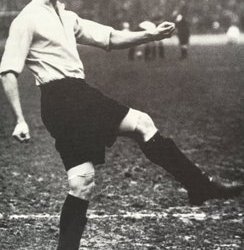
10 June
Kevin O’Flanagan is born in Dublin (d. 2006)
14 June
Walter Weedon Grossmith dies in London (b. 1854)

15 June
At 8.40 am after flying for 16 hours and 28 minutes and covering 1,900 miles without stopping, John Alcock and Arthur Brown mistook Derrigimlagh bog for a landing strip and landed their plane completing the first transatlantic flight.
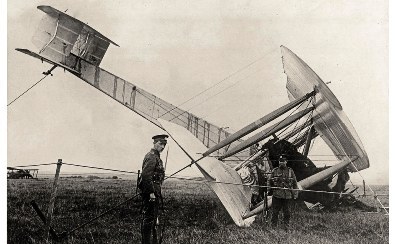
“I’m Alcock – just come from Newfoundland”, the Vimy pilot told the Marconi technicians that had tried to warn them about the bog.
“Yesterday, I was in America, and I’m the first man in Europe ever to say that.” – Arthur Brown
16 June
Fourteen IRA volunteers from the Kilbrittain company ambush a six-man British Army-RIC patrol at Rathclarin, Co. Cork and seize 5 rifles, one revolver and 200 rounds of ammunition. Only 2 of the IRA men are armed for the ambush. Volunteer Mick O’Neill is injured in the raid which was not sanctioned by Brigade HQ. "The fact that it was completely successful had an immense effect on morale and on the whole direction of the volunteer military effort in West Cork."
Greek forces lose 20 men in the Malgaç Raid as Turkish forces destroy the railway bridge and capture weapons and ammunition.
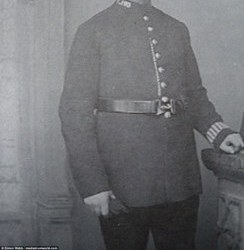
17 June
Station-Sergeant Thomas Green is wounded in the Epsom Riot when 400 Canadian troops attack the police station after two soldiers had been arrested.
18 June
The Dáil establishes the National Arbitration Courts.

19 June
The Dáil approves the First Dáil Loan (for £500,000)
20-21 June
Greek forces suffer 30-80 killed and 40 wounded in the Turkish raid on Erbeyli. 72 Turkish civilians are abducted and executed by Greek troops as a warning against future raids.
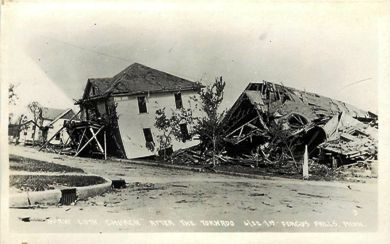
22 June
A tornado kills 57 people in Fergus Falls, Minnesota.
Greek units suffer 30 killed and 40 wounded in the Turkish raid on Erikli. This causes Greek forces to retreat.
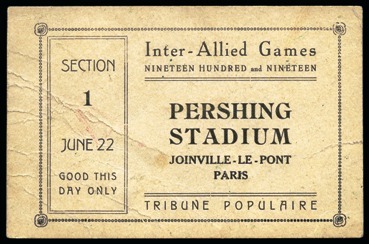
Approximately 1,500 servicemen or ex-sevicemen from 18 countries compete in the Inter-Allied Games in Le Stade Pershing outside of Paris.
23 June
RIC Detective D.I. Michael Hunt is shot twice in the back in a scuffle with IRA volunteers Jim Stapleton and James Murphy in Thurles, Co. Tipperary.
24 June
Two RIC officers are attacked and disarmed near Meenascarthy, Co. Kerry. Ten IRA volunteers are later arrested and five of them sentenced to gaol.
25 June
24 Americans are killed and 25 wounded repelling Red Army forces at the Battle of Romanovka. The Red army lose a similar number of men.
26 June
Castletownbere born William Martin Murphy dies in Dublin (b. 1845)

28 June
The Treaty of Versailles is signed in the Hall of Mirrors.
Two British soldiers are killed while on patrol by the Irish Republician Army.
Ion Dezideriu Sîrbu is born in Petrila (d. 1989)
29 June
Dáil Courts are established to hear civil cases.

Cork players wear red jerseys for the first time as they play against Tipperary in the Munster Hurling Semi-Final at the Cork Athletic Grounds in Ballintemple. The admission price is increased from sixpence to 1 shilling which results in protests that include sections of sheet iron being torn down at one end of the grounds. The result of the match is Cork 2-4 Tipperary 2-3.
1 note
·
View note
Text
Hopes of playing in the New Zealand tournament went up
IRE v NZ Rugby :The Dubliner knows the scene from his time as skills and attack coach when Ireland, under Philip Doyle, claimed their one and only Grand Slam back in 2013.
Part of the set-up since 2010, he was also in place in 2014 when Ireland beat New Zealand at the World Cup.
That Ireland had reached such heights less than a decade ago makes the drop-off all the more stark.
Following an eighth-place finish at the 2017 World Cup, held in Ireland, the team needed to qualify for the RWC2021.
Hopes of playing in the New Zealand tournament went up in smoke last month after losing to Spain and Scotland in a round-robin tournament.
The fall-out from that has led to the IRFU launching an independent inquiry into the dismal campaign, while simultaneously a broader review to look at the overarching structures in the women’s game is ongoing.
"He’s a man of integrity and an effective communicator, both of which are big strengths in the women’s game," Cantwell, Ireland’s most capped player and now women’s high-performance manager with South Africa, told RTÉ Sport.
"I have no doubt Greg will approach this head coach role with excellent energy and planning and create a vision with the players where they will all need to be part of."
McWilliams has previously coached Leinster U19s and St Michael’s College in Dublin, a school that counts James Ryan, Rónan Kelleher, Dan Leavy, Max Deegan, Luke McGrath, Cathal Marsh and Ross Byrne among its alumni.
McWilliams chatting to Ross Byrne and Luke McGrath when Ireland played the USA in 2018
A former business and geography teacher, McWilliams relocated to the USA in 2014 to become director of rugby and men’s head coach of Yale University.
All Blacks vs Ireland live Three years later former All Blacks coach John Mitchell took him on board with the US Eagles as attack and backs coach, a role he continued under current boss Gary Gold.
James Kennedy, former CEO and chairman of MLR side Rugby United New York, where McWilliams was head coach from September 2019 until stepping away in March of this year to help his family as his wife Sarah battled significant health issues, says the IRFU have made a shrewd appointment.
"He was more than a coach, he was keen to promote the programme, which was exactly what we needed to raise the profile here," said the Tipperary native and former St Munchin’s College pupil, who sold RUNY to a New Zealand-based investment fund earlier this year.
"When he was working with USA Rugby he understood that he needed to be more than a coach, getting out there and promoting the game.
"He was very attractive to a number of teams and I was lucky enough to get him to New York for a year.
"He was a good coach, a very good man-manager, very good to the players. He knew about promotion, marketing, he had all that in him.
"He’s a musician so he is able for a crowd. He’ll break out the guitar, him and Gary Gold would have the guitars on tour and start jamming.
"Some programmes are conservative and prefer the coach to keep a low profile but maybe Irish women’s rugby needs someone like that to get more women involved.
"He’s a really good coach too but he has attributes that should be taken advantage of when it comes to the overall structure."
Former Ireland wing Ali Miller, who finished top try-scorer in the 2013 campaign, agrees that McWilliams' experience will be important for the rebuild.
"He has worked with a team that achieved success, so he knows the requirements. He’s very good at detail and structure," says the Laois woman.
"He’ll look to have a game plan that suits the players and suits the strengths of the team. He’s also good at figuring out different game plans when needed to deal with different teams.
"He's good on launch plays and getting key runners into the game.
"He’ll be big on standards. Discipline was a bit of an issue in the qualifiers so hopefully that will be rectified."
Speaking to the Irish Independent last year, McWilliams, 43, gave an insight into his coaching philosophy that suggests his approach may be a key factor in what’s required to get the women’s game in Ireland on the right track.
"I was offered the opportunity to coach at Yale and help create a holistic rugby programme, based around education and growth, on and off the field," he said.
"In my opinion, the art of creating a challenging, fun, intelligent environment - regardless of the talent - is a massively under-rated skill. I believe it is the backbone to education.
"As a coach, it is not necessarily about your technical knowledge, we can all learn a system. It really is the understanding of that system you are implementing, and coaching through the how, why and when."
The problems in the women's game in the country go deeper than the senior national team but Griggs had taken this group of players has far as he could.
McWilliams now has the task of re-invigorating the squad so that the lowest point in recent years is soon consigned to the past.
Listen to the RTÉ Rugby podcast on Apple Podcasts, Soundcloud, Spotify or wherever you get your podcasts. Ireland vs All Blacks
0 notes
Text
1777 Irish Code Duello: The Most Formal Way to Fight
As long as there have been living breathing beings on earth they have found ways to quarrel amongst themselves. Historical texts and stories are filled with endless lists of battles, grudges, fistfights, vendettas, bar fights, brawls, wars and scuffles, both minute and gigantic, that have all had a hand in carving out the past. These fights were at least partially designed by their times and even when daily life was dictated by dignity, people still found a way to turn their fighting into formal affairs.
Dueling is a practice seen as far back as ancient times and the middle ages where two people would take part in one-on-one combat to settle disputes with whoever lost the fight being considered the guilty party. In 1526 the idea of dueling became mainstream when the treaty between Spain and France broke down resulting in Frances I challenging Charles V to a duel that never ended up taking place. This notion of the duel spread across the globe taking a firm hold in France and coming ashore with the earliest settlers of the United States a century later. As times and lives changed, so did the duel and it gradually transformed into a practice not for beggars and commoners, but for aristocrats looking to enact on their grudges in a way that was as ritualistic, proper, and dignified as dressing in their fanciest clothes.

As the 18th century dawned, so did the persona of the gentleman. With power and prosperity now extending beyond royalty and becoming accessible to a wider base, the route to the higher class could be found in business, military, career, landownership, politics, and community or city roles. Their status was clear in the way in which they presented themselves to the world. Social engagements, rich homes and possessions, fine clothing, and conduct painted the picture of the new upper class. An excerpt from Rules of Etiquette and Home Culture stated that
“It is the duty of a gentleman to know how to ride, to shoot, to fence, to box, to swim, to row and to dance. He should be graceful. If attacked by ruffians, a man should be able to defend himself, and also to defend women from their insults.”
The notion of defending oneself does not automatically congeal with the idea of the gentleman. But, an answer lay in the duel and for the aristocrats and elite of the 18th century this formal act of fighting was outlined in detail for them with the creation of the Irish Code Duello.
The Irish Code Duello is a set of twenty-seven formal rules for dueling that was laid out and adopted in 1777 at Clonmel Summer Assizes by gentlemen-delegates of Tipperary, Galway, Sligo, Mayo and Roscommon. The code’s entrance into the world coincided with a change in the mainstream weapon of choice. In the previous centuries dueling almost always meant a round of hand-to-hand combat with swords. These were often (but not always) replaced with the more fashionable choice of pistols and copies of the dueling code were almost always kept in a gentlemen’s pistol case.

The interior of the 18th century gentlemen’s pistol case
The reason for someone challenging another to a duel could be as simple as them reacting to a petty insult. At the core of it, the duel was for the preservation of one’s honor. Once challenged, a response was required otherwise the accused risked being publicly shamed and even having his cowardice written about in the newspaper. In a day and age when appearances, status, and image meant everything an embarrassment on that scale could ruin their business dealings and destroy their standing in the community. It was social suicide. No one truly wanted to duel, and the first steps of the challenge gave both parties ample time to get out of it before it came to pulling pistols.
Each participant in the possible duel had someone called a Second. This was a trusted friend of the same social standing (Rule #14) whose job it was to settle the rift nonviolently. If it did come to a duel it was their job to ensure it was carried out properly according to the rules. First, the offended party sent their Second to issue a challenge to offender. But first, they looked for an apology:
“Rule 1. The first offence requires the first apology, though the retort may have been more offensive than the insult. Example: A tells B he is impertinent, etc.; B retorts that he lies—yet, A must make the first apology, because he gave the first offence; and then (after one fire) B may explain away the retort by subsequent apology.”
If the offender apologized, then the matter was considered settled. If they did not, then it was them that chose the location of the duel while the offended challenger chose the distance that would separate them at the shots. It was the Seconds that decided on the time and terms of the firing. Apologies were permitted at any point up until combat began but once the duel officially started the option to apologize was voided until at least one round of bullets was fired.
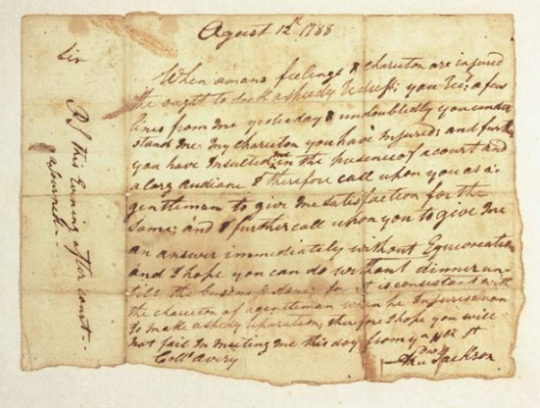
Letter dated August 12th 1788 sent from Andrew Jackson challenging Colonel Waightstill Avery to a duel. Image is from the North Carolina Museum of History.
Once both parties were at the location of the duel it was the Second’s job to load the pistols in the presence of each other “unless they give their mutual honors they have charged smooth and single, which should be held sufficient” (Rule #18). They then hand the pistols, “one pistol; but in gross cases two, holding another case ready charged in reserve” (Rule #24), to the participants. On the occasion where both Seconds disagree, the option was there for them to exchange shots themselves at the same time as the initial duelers (Rule #25).
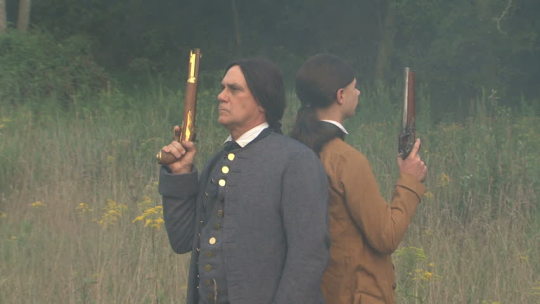
Reenactment of a gentleman’s duel
The Irish Code Duello quickly became the standard rules of the gentleman’s brawl all over the world. In February of 1815 Irish political leader Daniel O’Connell found himself involved in just such an altercation. O’Connell was opposed to the city government of Dublin, calling it a “beggarly corporation” which deeply offended Dublin Corporation member and skilled duelist John D’Esterre. Huge crowds gathered to witness the duel where many were hoping to finally see the end of O’Connell. However, the fatal shot was taken by D’Esterre who was shot in the hip and died after the bullet traveled to his stomach. O’Connell deeply regretted the whole incident and swore he would never duel again regardless of the social reaction.
An earlier deadly duel, arguably one of the most famous in history, took place in the United States between First Secretary of the Treasury Alexander Hamilton and Vice President of the United States Aaron Burr on July 11th 1804. When Hamilton shot first the bullet hit a tree which some believe was him “throwing away” his shot in order to suspend the duel. Burr responded by mortally wounding Hamilton with his shot and the Secretary of the Treasury died the following day.
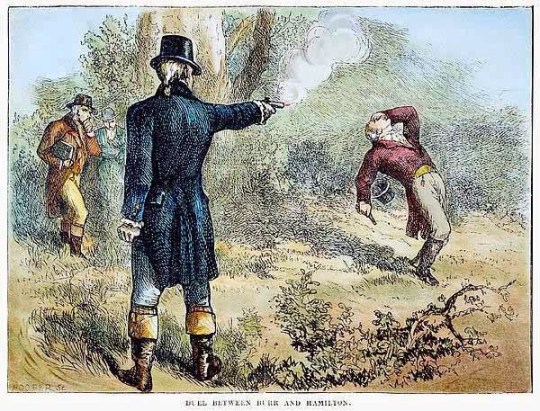
Early illustration depicting the duel between Hamilton and Burr
Dueling was a common occurrence in Europe and the United States up until the 19th century when a significant decline began to take place. Some places like New York state saw a rise to organizations such as the Anti-Dueling Association of New York and dueling became outlawed in Washington D.C. on February 20th 1839.

Pamphlet written by the Anti-Dueling Association of New York circa 1908
The last fatal duel in England took place on October 19th 1852 between French political exiles Frederic Cournet and Emmanuel Barthélemy which resulted in Cournet being killed. By the time World War I came crashing onto global shores the practice of dueling was made illegal in much of the western world and the practice faded into obscurity. However, in the early 20th century pistol dueling with wax bullets became a popular sport in France with it even being included in the 1908 Olympics.
Although is now greatly extinct, the image of two men marching away from each other and turning to shoot in a controlled, formulaic method remains iconic being seen and parodied in films, advertisements, and even children’s cartoons. The Irish Code Duello may not apply in these fictitious scenarios but they remain with us today serving a different function, as a testament to the importance of appearances and honor within the new-money world of the 18th century aristocracy.
The following is a list of all 27 rules of the Irish Code Duello (25 original rules and two additional Galway Articles.
Rule 1. The first offence requires the first apology, though the retort may have been more offensive than the insult. Example: A tells B he is impertinent, etc.; B retorts that he lies—yet, A must make the first apology, because he gave the first offence; and then (after one fire) B may explain away the retort by subsequent apology
Rule 2. But if the parties would rather fight on, then, after two shots each (but in no case before), B may explain first, and A apologize afterwards. Note: The above rules apply to all cases of offences in retort, not of a stronger class than the example.
Rule 3. If a doubt exist who gave the first offence, the decision rests with the seconds; if they won’t decide, or can’t agree, the matter must proceed to two shots, or to a hit, if the challenger require it.
Rule 4. When the lie direct is the first offence, the aggressor must either beg pardon in express terms, ex change two shots previous to apology, or three shots, followed by explanation; or fire on until a severe hit be received by one party or the other.
Rule 5. As a blow is strictly prohibited under any circumstances amongst gentlemen, no verbal apology can be received for such an insult; the alternatives therefore are—the offender handing a cane to the injured party, to be used on his own back, at the same time begging pardon ; firing on until one, or both, is disabled; or exchanging three shots, and then asking pardon, without the proffer of the cane. If swords are used, the parties engage till one is well blooded, disabled, or disarmed ; or until, after receiving a wound, and blood being drawn, the aggressor begs pardon. Note: A disarm is considered the same as a disable; the disarmer may (strictly) break his adversary’s sword; but if it be the challenger who is disarmed, it is considered ungenerous to do so. In case the challenged be disarmed, and refuses to ask pardon, or atone, he must not be killed, as formerly, but the challenger may lay his own sword on the aggressor’s shoulder, then break the aggressor’s sword, and say, “I spare your life!” The challenged can never revive that quarrel—the challenger may.
Rule 6. If A gives B the lie, and B retorts by a blow (being the two greatest offences), no reconciliation can take place, till after two discharges each, or a severe hit, after which B may beg A’s pardon humbly for the blow, and then A may explain simply for the lie; because a blow is never allowable, and the offence of the lie, therefore, merges in it. (See preceding rule.) Note: Challenges for undivulged causes may be reconciled on the ground, after one shot. An explanation, or the slightest hit, should be sufficient in such cases, because no personal offence transpired.
Rule 7. But no apology can be received in any case after the parties have actually taken their ground, without ex change of fires.
Rule 8. In the above case, no challenger is obliged to divulge his cause of challenge (if private), unless required by the challenged so to do before their meeting.
Rule 9. All imputations of cheating at play, races, etc., to be considered equivalent to a blow, but may be reconciled after one shot, on admitting their falsehood, and begging pardon publicly.
Rule 10. Any insult to a lady under a gentleman’s care or protection, to be considered as, by one degree, a greater offence than if given to the gentleman personally, and to be regulated accordingly.
Rule 11. Offences originating or accruing from the sup port of ladies’ reputation, to be considered as less unjustifiable than any others of the same class, and as admitting of slighter apologies by the aggressor, this to be determined by the circumstances of the case, but always favorably to the lady.
Rule 12. In simple unpremeditated rencontres with the small sword, or couteau-de-chasse, the rule is—first draw, first sheathe; unless blood be drawn ; then both sheathe and proceed to investigation.
Rule 13. No dumb shooting or firing in the air admissible in any case. The challenger ought not to have challenged without receiving offence; and the challenged ought, if he gave offence, to have made an apology before he came on the ground ; therefore, children’s play must be dishonorable on one side or the other, and is accordingly prohibited.
Rule 14. Seconds to be of equal rank in society with the principals they attend, inasmuch as a second may either choose or chance to become a principal, and equality is indispensable.
Rule 15. Challenges are never to be delivered at night, unless the party to be challenged intend leaving the place of offence before morning; for it is desirable to avoid all hot-headed proceedings.
Rule 16. The challenged has the right to choose his own weapon, unless the challenger gives his honor he is no swordsman; after which, however, he cannot decline any second species of weapon proposed by the challenger.
Rule 17. The challenged chooses his ground; the challenger chooses his distance; the seconds fix the time and terms of firing.
Rule 18. The seconds load in presence of each other, unless they give their mutual honors they have charged smooth and single, which should be held sufficient.
Rule 19. Firing may be regulated—first, by signal ; secondly, by word of command; or, thirdly, at pleasure—as may be agreeable to the parties. In the latter case the parties may fire at their reasonable leisure, but second presents and rests are strictly prohibited.
Rule 20. In all cases, a miss-fire is equivalent to a shot, and a snap or a non-cock is to be considered as a miss-fire.
Rule 21. Seconds are bound to attempt a reconciliation before the meeting takes place, or after sufficient firing or hits, as specified.
Rule 22. Any wound sufficient to agitate the nerves, and necessarily make the hand shake, must end the business for that day.
Rule 23. If the cause of meeting be of such a nature that no apology or explanation can or will be received, the challenged takes his ground, and calls on the challenger to proceed as he chooses ; in such cases, firing at pleasure is the usual practice, but may be varied by agreement.
Rule 24. In slight cases the second hands his principal but one pistol; but in gross cases two, holding another case ready charged in reserve.
Rule 25. Where seconds disagree and resolve to exchange shots themselves, it must be at the same time, and at right angles with their principals…If with swords, side by side, with five paces interval. Note: All matters and doubts not herein mentioned, will be explained and cleared up by application to the committee, who meet alternately at Clonmell and Galway, at the Quarter Sessions, for that purpose.
Galway Articles:
Rule 1. No party can be allowed to bend his knee or cover his side with his left hand; but may present at any level from the hip to the eye.
Rule 2. None can either advance or retreat, if the ground be measured; if no ground be measured, either party may advance at his pleasure, even to touch muzzles; but neither can advance on his adversary after the fire, unless the adversary steps forward on him. Note: The seconds on both sides stand responsible for this last rule being strictly observed; bad cases having accrued from neglecting of it.
#HushedUpHistory#featured articles#history#forgottenhistory#strangehistory#irishhistory#Ireland#CodeDuello#TheBigFight#Gentlemen#Duel#Dueling#Rules#Formality#Challenge#NeedlesslyComplicated#Aristocracy#those are the rules#fight#rule#fightclub#alexander hamilton#aaron burr#shotsfired#settle#disagreement#readyaimfire#rulebook#drama#IrishCodeDuello
3 notes
·
View notes
Text
As it happened: Dublin v Offaly, Tipperary v Waterford - Sunday hurling match tracker - The42
The42
As it happened: Dublin v Offaly, Tipperary v Waterford - Sunday hurling match tracker
The42
Good afternoon and welcome along to our live coverage of this afternoon's Leinster senior hurling championship clash between Dublin and Offaly, and then the crucial fixture between Tipperary and Waterford in the Munster senior hurling championship.
and more »
from sniper-ghost-warrior-3 - Google News https://ift.tt/2sNPz6Z
via IFTTT
0 notes
Text
Wipers or Vipers 2
Research into the origin and indeed the authenticity of ‘Vipers’ as a slang name for Ypres continues. There are a number of leads and possibilities: was it a mistake; a transcription of a slang German name for the place; a projection by Anglophones of a slang German name for the place; a name marking bitter feelings towards the place; or something else? The appearance of the term in the Publishers’ Circular in 1920 means that this merits a thorough investigation.
Firstly, how did people feel about vipers at the time? There is ample evidence that actual vipers were treated as pests, to be killed. ‘At North Park, Tedburn, recently, Mr W Coldridge killed a viper which measured 2ft 6in. in length. On being opened seven young ones were found inside, as well as a fully grown mouse. The viper is regarded as a very fine specimen’ (Western Times, 9 April 1915, p14). ‘A large snake was found in a farmhouse at Southery Ferry one day last week, and a viper has been killed in the middle of Southery village’ (Thetford and Watton Times and People’s Journal, 20 February 1915, p4). But some documentation reveals some unsureness as to the identity of the animals: ‘Mr F. and his son on one day killed eleven vipers, two snakes, and one adder. On another occasion they destroyed eight vipers and two snakes’ (Exeter and Plymouth Gazette, 30 April 1915, p5).
In this context it is easy to see how the epithet ‘viper’ would be applied to anyone hated, particularly if there was an element of deception involved: thus in Rome the Grand Master of the Freemasons described pacifism as ‘a viper which lay hidden, but whose head must be crushed’ (Dundee Evening Telegraph, 27 November 1917, p1). Turkey, in siding with the Central Powers ‘has acted like a viper to us her old friend and ally’ (Warwick and Warwickshire Advertiser, 13 March 1915, p5). The submarines that sank the Aboukir, the Hogue and the Cressy in September 1914 were described by René Milan as ‘submarine vipers’ (Vagabonds of the Sea, 1919, p48).
‘Viper’ was a straightforward term of abuse against the enemy: a Belgian citizen living in Britain, who took his own life at the beginning of the war, left a note describing the Kaiser as ‘that ferocious human viper of Germany.’ (Newcastle Journal, 2 August 1914, p8). ‘Kaiser-Americans’ were ‘A Nest of Vipers in the States’ (Nottingham Evening Post, 3 August 1915, p3). Following the sinking of the Lusitania, the Dublin Daily Express called for ‘the stamping out of the Prussian vipers or the effective removal of their fangs’ (10 May 1915, p4). German rage against Britain was exemplified in ‘torrents of abuse, floods of fantastic falsehoods, and an ineradicable conviction that the British people are a race of vipers, dastards, bloodsuckers, liars, thieves, murderers, and traitors!’ (Liverpool Echo, 17 January 1917, p3).
British citizens could also be vipers: professional footballers who did not enlist were ‘traitors’ and ‘vipers’. (Manchester Evening News, 7 April 1915, p7). George Lansbury, the socialist politician, condemned the Pall Mall Gazette for describing ‘all those who advocate peace as “vipers”’ (Daily Herald, 3 July 1915, p3). Elsewhere pacifism was equally treated: The critics of Sir Douglas Haig were ‘The Vipers at Work’ – ‘he treated [their] viperous attacks with the contempt they deserved.’ (Globe, 17 December 1918, p2).
Yet the term could also be employed for the animal’s attributes of sudden striking in effective places – in 1899 the Navy’s first turbine destroyer was HMS Viper, though the Navy soon abandoned the use of snake names for ships (though the Western Mail, 11 March 1915, p8, implied that there was a still an HMS Viper in use). Thus ‘viper’ as a term could have useful connotations; but during the war it was generally a negative epithet.
As previously discussed, Ypres occupied a special place in British sentiment, typifying stubborn resistance, loyalty to an ideal, and the projection of these onto a place. But the Ypres League, the Ypres Times, Ypres Day, were post-war constructs. While there is a string tendency to interpret The Wipers Times as lightheartedness in the face of death, it can equally be read as cynical gallows humour, a shout of rage at the futility of the soldier’s situation: there is no love for Ypres in its pages. The patriotic bombast of The War Illustrated might announce that the ashes of Ypres were ‘impregnated with the spirit of Albion’s immortal glory’, but it was still ‘The Dead City’ (p1180, July 1915), a place that ‘smells of lilac and of death’ (S Macnaughtan, A Woman’s Diary of the War, 1915). Already by June 1915 people in Britain were aware that Ypres held a special place of fear for the soldier: David Lloyd George made a speech in Manchester on 3 June, in which he urged the need for greater efficiency in the manufacture of weaponry; particularly the labour force had to work where it was needed, not where it desired, just as was the case for soldiers – ‘The enlisted workman cannot choose his locality of action. He cannot say, “Well, I am quite prepared to fight at Neuve Chapelle, but I won’t fight at Festubert, and I am not going near the place they call ‘Wipers’”’ (The Times, 4 June 1915, p9).
Looking again at the documentation we have for the use of ‘Vipers’ for the place-name, we have the following:
Thanet Advertiser, 23 January 1915, p3, reporting a speech given by a vicar during an evening of talks: ‘Mr Tonks remarked that in connection with this town one was reminded of the optimistic humour of the British “Tommy”. For him, the pronunciation of the town is “Vipers”, and the spirit of lightheartedness revealed by such nick-names must surely assist our men in their struggle for victory.’
The Middlesex Chronicle 26 June 1915, p3: ‘Private E. W. Smith, of Whitton, who writes, under date of June 13th, sends two verses composed by a member of his brigade, … He says “I know those at home are only too delighted to hear and know what ‘Tommy’ sings, even if it only light parody.”
Far far from Ypres (vipers) I long to be.
Where German snipers can’t pot at me.
Think of me crouching where the worms creep
Waiting for something to put me to sleep.

The Manchester Guardian, 29 December 1915, p7: ‘Frenchmen who call Ypres ‘Wipers’. This includes the statement: ‘The gallant army of France has for generations pioneered military progress, yet today the poilu is assimilating British ways and British methods in an extraordinary manner. He is even carrying it to the length of pronunciation. When the French soldier speaks of “Wipers” in the most natural manner imaginable as though he had never called it anything else and sings “Tipperary” as frequently as his own glorious anthem, we may be prepared for anything.’
Imagine how ‘Wipers’ would be pronounced in a French accent: it would probably depend whether the speaker were imitating spoken English, in which case it would be more like ‘ooïpers’, or speaking from the written form, more likely to be ‘vipers’ (as in ‘wagon-lits’).
Evening Despatch, 14 February 1916, p1: a cartoon of German soldiers, with the caption ‘It is stated that German soldiers have a dread of being sent to the Ypres front [see Lloyd George’s speech above]. Some have committed suicide rather than face it. Soldiers’ chorus on being ordered to Ypres :-
O Faderland, my Faderland,
Thy face I never more shall see;
The Englishes at Vipers vos-
Dis is der place for me.
The Publishers’ Circular, 3 January 1920, p7: ‘Ypres, or “Vipers,” as Tommy called it, is a name which will long be remembered by the families of the men from all parts of the Empire who fought and died there. …’
So we see a projection of the term as German pronunciation – critically, no slang name for Ypres in German has been found -, as a projected French pronunciation, one military and two civilian documentations of ‘Vipers’, one of the civilian usages being post-war. There is a possibility that any of the last three were mistakes or individual usages; it is likely that the two civilian usages were acquired from soldiers, the Publishers’ Circular one possibly being from a former soldier. There is also the residence documentation of Private E. W. Smith, Whitton, near Hounslow, now part of Greater London, but then a village to the west of London.
A change of direction: also in the Globe, on 19 January 1916, p2, there appears this:
The “vipers” alluded to in a morning paper as circulating traitorous and disloyal leaflets and circulars must be a kind of pen-viper, as Mr. Sam Weller would say.’ What the writer is alluding to here is the by then centuries-old phenomenon in the London accent of the v/w merger, whereby ‘v’ was pronounced as ‘w’ and vice versa: Sam Weller in Dickens’ The Pickwick Papers is the most well-known exponent of this (“All good feelin’, sir—the wery best intentions, as the gen’l’m’n said ven he run away from his wife ‘cos she seemed unhappy with him”).
There has been considerable argument over the authenticity of this transcribed accent. William Matthews in Cockney Past and Present ([1938] 1972) quotes B Smart (Walker Remodelled, 1836) as saying that it was outmoded in the 1830s, and that A W Tuer, author The Kawkneigh Awlminek (1883), claimed that Weller was ‘exceptional in his pronunciation’ (p180); Ernest Weekley, born in 1865, claimed that though he had heard ‘weal’ for ‘veal’ and ‘wittles’ for ‘victuals’, he had never heard the reverse substitution of ‘v’ for ‘w’. Comedians such as Gus Elen were using the ‘w’ for ‘v’, as in ‘wery good’, well into the 1930s. Peter Wright quotes Henry Wyld as hearing people say ‘vild’ for ‘wild’ as a joky imitation of speech from about 1850 (Wright P, Cockney dialect and slang, London: Batsford, 1981, p137). Supposed to have died out in the nineteenth century, there were remnants of the accent still to be found in the south-east of England: George Bernard Shaw in a note to Captain Brassbound’s Conversion (1900), wrote: “When I came to London in 1876, the Sam Weller dialect had passed away so completely that I should have given it up as a literary fiction if I had not discovered it surviving in a Middlesex village, and heard of it from an Essex one.” Note ‘in a Middlesex village’.
Peter Trudgill in Investigations in Sociohistorical Linguistics (Cambridge, 2010, p65) offers the following: ‘Wakelin [1972: 95-6] writes that the Survey of English Dialects (SED) materials from the 1950s and 60s) show that “in parts of southern England, notably East Anglia and the south-east, initial and medial [v] may appear as [w]’. One of the examples given is ‘viper’. Thus, well into the twentieth century in parts of southeast England ‘viper’ was being pronounced as ‘wiper’.
Now, going back into the nineteenth century, the example frequently given to show the use of this merger of sounds is ‘an old cockney conundrum’ (Wright, p137). This is to be found in Errors of Pronunciation, and Improper Expressions, Used frequently, and chiefly by The Inhabitants of London, published in 1817. On page 34 we find, under V:
V, for W; and W, for V. This error is constantly committed by the vulgar. Veal and Vinegar are by them pronounced Weal and Winegar; whilst, Wine and Wind are sounded Vine and Vind. There is an old cockney conundrum which exemplifies this error:
Why is a pocket-handkerchief like a species of serpent? Answer – Because it’s a viper.
So a) there is anecdotal evidence of the v/w merger surviving in the southeast of England into the twentieth century, often but not always as joke or performance;
b) its exemplary form appears in a joke which specifically mixes ‘wiper’ and ‘viper’;
c) the cockney/London/southeast England accent was recognised as the dominant accent of the British Army on the Western Front: much evidence supports this claim, from ‘Ole Bill to the large number of London street names used as trench names. As an example of how this was translated to the Home Front, the boys’ comic The Dreadnought marked its recognition of the importance of the war to its readers with the announcement, (29 August 1914) 25 days after the declaration of hostilities, that it would be printing a war story every week, followed on 3 October with the beginning of its first war serial, which is centred on the main character of ‘Bill Stubbs, the Cockney Hero’.
Thus it is possible that the use of ‘Vipers’ for ‘Ypres/Wipers’ was an application, self-conscious perhaps, of a vestigial phenomenon in the all important wartime London/southeast England accent.
As a note here, an article in the Sunderland Daily Echo and Shipping Gazette 13 June 1917 (p2), not only indicated that the use of ‘Wipers’ was disappearing, but that it was seen as ‘uneducated’: ‘Now that there are more educated men in the ranks the pronunciation “Wipers” is dying out; in fact it is almost resented’. This is the reverse of what is implied by most of the evidence, that ‘Wipers’ was officers’ pronunciation, and had educated class connotations. ‘Educated’ men may have been more equipped to pronounce Ypres using the French pronunciation, but resentment was more likely to have been at civilians, and especially journalists, using the term.
The three instances, the Thanet Advertiser of January 1915, the Middlesex Chronicle of June 1915, and the Publishers’ Circular of January 1920, are the most noteworthy. The first two document local SE England pronunciation – the Rev Tonks in Thanet may have heard it from a local soldier on leave or convalescing, and though this can never be more than conjecture, he does link it with the well-documented terms ‘Jack Johnson’ and ‘Black Maria’. Recently another instance has emerged in the Publishers’ Circular, in an article published on 25 September 1915 (p271) in a review of S Macnaughtan’s A Woman’s Diary of the War: ‘… relating experiences in Antwerp during the siege, Furnes, the first battle of Ypres – or “Vipers,” as our “Tommies” call it.’ Compare this with the 1920 text: ‘Ypres, or “Vipers,” as Tommy called it’. Close reading of Macnaughtan’s A Woman’s Diary of the War shows there is no instance throughout that book of the use of ‘Wipers’ or ‘Vipers’ or slang names for any Belgian or French towns, though she does self-consciously use slang terms, such as ‘it “bucked one,” as schoolboys say’ (p44) or ‘with “Jack Johnsons” still whizzing overhead’ (p46). So this use of ‘Vipers’ is clearly an inclusion by a Publisher’s Circular editor, quite possibly the same person using a close variation five years later. After reading through every issue of the Publisher’s Circular from August 1914 to July 1916, I think it is unlikely that the source for this usage will appear.
2 notes
·
View notes
Text
#OTD in 1920 – Irish War of Independence | In Dublin, 31 people are killed in what became known as ‘Bloody Sunday’.
#OTD in 1920 – Irish War of Independence | In Dublin, 31 people are killed in what became known as ‘Bloody Sunday’.
A day of carnage in Dublin in an increasingly bitter and bloody Irish War of Independence; in total, 31 people were killed. Early in the day, Michael Collins ‘Squad’ and the Dublin Brigade wipes out much of British Intelligence in Dublin. Hours later, British troops take horrible revenge.
In a superbly executed guerilla operation, Michael Collins dispatched his agents to assassinate fourteen…

View On WordPress
#Auxilliaries#Bloody Sunday#Croke Park#Dublin Brigade#Dublin Castle#Dublin V Tipperary#England#Ireland#Irish History#Irish War of Independence#Michael Collins#Michael Hogan#RIC#The Cairo Gang#The Squad
25 notes
·
View notes
Text
Wombwell Rainbow Interviews
I am honoured and privileged that the following writers local, national and international have agreed to be interviewed by me. I gave the writers two options: an emailed list of questions or a more fluid interview via messenger.
The usual ground is covered about motivation, daily routines and work ethic, but some surprises too. Some of these poets you may know, others may be new to you. I hope you enjoy the experience as much as I do.
Gabriel Rosenstock,
according to Wikipedia,
(born 1949) is an Irish writer who works chiefly in the Irish language. A member of Aosdána, he is poet, playwright, haikuist, tankaist, essayist, and author/translator of over 180 books, mostly in Irish. Born in Kilfinane, County Limerick, he currently resides in Dublin.
Rosenstock’s father George was a doctor and writer from Schleswig-Holstein, Germany, who served as a German army doctor in World War II. His mother was a nurse from County Galway. Gabriel was the third of six children and the first born in Ireland. He was educated locally in Kilfinane, then in Mount Sackville, Co Dublin; exhibiting an early interest in anarchism he was expelled from Gormanston College, Co. Meath and exiled to Rockwell College, Co. Tipperary; then on to University College Cork.
His son Tristan Rosenstock is a member of the traditional Irish quintet Téada, and impressionist/actor Mario Rosenstock is his nephew.
Rosenstock worked for some time on the television series Anois is Arís on RTÉ, then on the weekly newspaper Anois. Until his retirement he worked with An Gúm, the publications branch of Foras na Gaeilge, the North-South body which promotes the Irish language.
Although he has worked in prose, drama and translation, Rosenstock is primarily known as a poet. He has written or translated over 180 books.
He has edited and contributed to books of haiku in Irish, English, Scots and Japanese. He is a prolific translator into Irish of international poetry (among others Ko Un, Seamus Heaney, K. Satchidanandan, Rabindranath Tagore, Muhammad Iqbal, Hilde Domin, Peter Huchel), plays (Beckett, Frisch, Yeats) and songs (Bob Dylan, Kate Bush, The Pogues, Leonard Cohen, Bob Marley, Van Morrison, Joni Mitchell). He also has singable Irish translations of Lieder and other art songs.[1]
He appears in the anthology Best European Fiction 2012, edited by Aleksandar Hemon, with a preface by Nicole Krauss (Dalkey Archive Press).[2] He gave the keynote address to Haiku Canada in 2015.
His being named as Lineage Holder of Celtic Buddhism inspired the latest title in a rich output of haiku collections: Antlered Stag of Dawn (Onslaught Press, Oxford, 2015), haiku in Irish and English with translations into Japanese and Scots Lallans.
He also writes for children, in prose and verse. Haiku Más É Do Thoil É! (An Gúm) won the Children’s Books Judges’ Special Prize in 2015.
Links:
https://en.wikipedia.org/wiki/Gabriel_Rosenstock#Biography
http://roghaghabriel.blogspot.ie/
http://www.amazon.co.uk/s/ref=nb_sb_noss?url=search-alias%3Dstripbooks&field-keywords=gabriel+rosenstock
The Interview
Q. 1. When and why did you start writing poetry?
I think the Muse came a-courting a long, long time ago, in an age before Gutenberg, an age before papyrus, when the poet was what he always is – though the role is suppressed today – a shaman.
She keeps coming – trying to possess me fully – but she knows I’m elusive, elusive as she is. We are both Spirit, pretending to be flesh, to be real. It’s a divine play, a sport, a leela as they say in India. I also write and translate for children – mainly in Irish, or Gaelic, and this is also leelai, pure and simple!
Ireland and India have so much in common. The writings of Myles Dillon and Michael Dames are good starting points for anyone interested in exploring that connection.
Ireland herself takes her name from a tripartite goddess and I dedicated a year to her in a bilingual book inspired by the devotional poetry of India, bhakti:
https://www.overdrive.com/media/796797/bliain-an-bhande-year-of-the-goddess
I mentioned the poet-shaman. There are very few courses in Creative Writing today that teach you how to be a shaman: it can’t be taught! So they teach form iinstead, how to write a sonnet or a villanelle – five tercets and a quatrain, is it? Enjambment anybody? Poets daringly continue a phrase after a line break and expect applause.
Irish poets learn your trade, sing whatever is well made. Yeats (whom I love) has a lot to answer for. Learn your trade! Poets today are tradeswomen and tradesmen for the most part. All form, no spirit, no melody that breaks the heart.
No heart. So, the great challenge today, in my book, is to reconnect with Spirit. Otherwise, forget it.
The only way to write is to write – and read, of course. Trust the inner ear – not what the manuals tell you – trust the heart, trust language. It’s not a lifeless tool in your hands, you silly tradesman. It’s alive, it’s divine. May your poetry be a sacrifice to her!
Having said all that, I occasionally teach haiku. The way I teach haiku is simply to present the works of the grandmasters of haiku, hoping that their spirit will ”catch’ and inflame the acolyte. Many believe that Basho was the grandmaster of haibun – prose speckled with haiku – and that the greatest of the haiku masters was Buson. I cobbled together new versions of Buson, in Irish and English, a volume which also contains versions in Scots by John McDonald:
https://www.amazon.com/Moon-Over-Tagoto-Selected-Haiku-ebook/dp/B00WUXQZ54
We need more multilingual books of poetry, tanka and haiku. We need to free ourselves from the dying clutches of the Anglosphere and listen to real poetry in languages which still cherish the divine music of the spheres: one can hear that sacred music in the voice of Scots-Gaelic poet Sorley MacLean, even when he reads his masterpiece Hallaig in English translation:
https://www.youtube.com/watch?v=VzewXmgVzL4
*** ***
Haiku Enlightenment and Haiku, the Gentle Art of Disappearing are two introductions to haiku and I hope that their titles reflect the spiritual basis of haiku, something which many haikuists ignore at their peril, I regret to say; for young readers (say, 8-12 years) there’s a book called Fluttering their Way into My Head:
https://www.amazon.com/exec/obidos/ASIN/1782010882/evertype-20
True haiku – Zen-haiku – is egoless and spontaneous and allows for ambiguity – the reader must make sense of it by drawing on her own experiences, dreams, memories and so on – and yet it’s happening in the Now (if there’s such a thing as the Now).. I’m fully aware of promoting a book such as Fluttering their Way into My Head and speaking at the same time about ego-lessness! But, you see, I don’t identify with ‘my’ books as ‘mine’. They are about as ‘mine’ as is the moon over Tagoto.
Q. 2.Ted Hughes would be glad you extol the shamanic. Who introduced you to the shamanic in poetry?
Does one need an introduction? I hold shamanism to be a vital part of my literary and cultural heritage.
http://www.sacred-texts.com/neu/celt/cg1/index.htm
I can identify with the world of Carmina Gadelica whilst the world of Philp Larkin is alien to me.
Interesting that you should mention Hughes. I advise aspiring poets to wean themselves from the dominance of English-language literature, especially when it expresses itself in WASPish terms. I know many American poets, some of whom I’ve met at literary festivals, others with whom I have a friendly e-mail acquaintance. Many of them seem straitjacketed by the White Anglo-Saxon Protestant way of walking, talking, eating, drinking, dressing – and writing! I translated a volume of poems, Cuerpo en llamas, by the late Chicano poet Francisco X. Alarcon into Irish and invited him to Ireland for the launch. He turned out to be a shaman-poet. The genuine article. We recorded the book on a cassette (built-in obsolescence?) and the opening invocation was in Nahuatl, the language of the Aztecs, the language of his grandmother. I had come across Aztec poetry before, via anthologies by the likes of Jerome Rothenberg, but didn’t realize until then that Nahuatl was a living language.
During his brief stay in Ireland, Francisco gave me an Aztec name, Xolotl. I wrote a long poem of that title – in a kind of shamanic frenzy – and put it away, out of sight. Years later I looked at it again and it’s the longest poem in my selected poems translated from the Irish, The Flea Market in Valparaiso. Here’s a link to the book and a review:
https://www.cic.ie/en/books/published-books/margadh-na-miol-in-valparaiso
I’ll let the review speak for itself. Expounding further on the role of the shaman poet is best left to others. But, I’ll say this much, Paul: artificial intelligence or AI has ‘advanced’ to such an extent that robots are now writing poetry – it would almost make you join the Luddites or inspire you to form your local branch of Anarcho-Primitivists!. I think we should be reading more of John Zerzan and Paul Cudenec to fully realize what kind of world we are creating for our grandchildren. Everybody says we can’t go back, we can’t stop the march of progress. Rubbish! Of course we can go back; I don’t like military metaphors but surely a wise general knows when to retreat?
Do we want poetry written by robots? Maybe it’s just science imitating life – so much poetry, especially in English, is artificial anyway. Futurologists talk of various possible disasters down the line – caused by our relentless ‘advancement’ such as shortage of energy supplies, of food and water, melting icecaps and so on and so forth. Overfishing will result in a shortage of fish. Nobody speaks of a shortage of poetry – it wouldn’t be disastrous enough, seemingly, nor would it bother mankind very much if we speeded up the death of languages, currently estimated at one language disappearing every fortnight. It’s the survival of the fittest, isn’t it?! Is it? Is that who we are, what we are?
So what if Irish dies, if Scottish Gaelic or Nahuatl dies, if Welsh dies, if Manx dies – again! If Beauty dies, so what? Who dreamed that beauty passes like a dream? Well, some of us are not willing to accept such a fatalistic scenario. The World Poetry Movement, for one, has sounded the alarm. Poets are not ‘joiners’ by nature but when the future of civilization is at stake, perhaps it’s time for all poets to become focused. Jack Hirschman, poet and social activist, describes the vision of the World Poetry Movement thus:
https://www.wpm2011.org/
‘an end to war world-wide, and the creation of a world government that shares and distributes the wealth of the world generously and sensitively in the process of creating an equality that is nothing but the word Love in the eyes of everyone because it also recognizes E V E RY human being as a brother or sister. With no need of any wall separating an ‘I’ from a ‘You’, a ‘He’ from a ‘She’ …
This is a wise vision. Quixotic? Utopian? So what. We need to rekindle hope, we as citizens, we as poets.
I was fortunate enough in this my 69th year on earth, fortunate indeed to have a near-death experience. After recovering from multi-organ failure, I became conscious of the love that poured in streams at my bedside from my wife Eithne, my daughters Heilean, Saffron and Eabha, my son Tristan and conscious, as well, of the wave of reciprocated love that streamed from me to them. I was conscious, too, of the love and concern that came from friends, relations and fellow scribes.
Hirschman, above, is speaking of Love, the ultimate reality. Left-wing theorists should speak more often to us of love; it would help their cause. The author of The Wretched of the Earth tells us that his criticism of the colonizer is inspired by love, not hate.
For a long while I could not read or write. Then I asked one of my daughters would she kindly order me a copy of Palgrave’s Treasury: you see, English-language poetry was my first love, before I ‘discovered’ Irish and its potential,just as the author of Decolonising the Mind decided that African literature need not be in the language of the colonizer, French, English or Portuguese. His own outlawed language, Gikuyu, was best suited to express what he wanted to reveal. I also asked my daughter to bring me anything by my favourite author, Isaac Bashevis Singer? So, Mr Rosenstock, are you Jewish then? I used to think that my empathy for Singer’s work meant exactly that, but no, I’m not Jewish. It is the ancient art of storytelling, brought to perfection in his short stories, that makes me alive not to Jewishness as such but to humanity, in all its guises. And what of my attraction to Irish culture and to Indian philosophies, particularly Advaita and bhakti? Well, I once heard Ganesh playing Napoleon Crossing the Rhine on the uilleann pipes:
http://forums.chiffandfipple.com/viewtopic.php?t=44223
I jest. But I did have an out-of-body experience listening to piper Eoin Duignan in a pub in Dingle. Look, I don’t feel particularly Indian, German, Irish or Jewish – live Irish music and the ancient sounds of the Irish language can lift one and link one deeply to the universal spirit, the rich complexity that is the world of the senses, too; a deepening of a sense of place; a feeling for history. English carries imperial baggage with it. The scales fell from my eyes once I understood that through Irish, the literary medium of my choice, I could see and experience the world differently. Lucky Poet is a memoir by Scottish poet Hugh Mac Diarmid. It touches on some of these issues.
A year or so ago I came across an editorial in Poetry Ireland Review that mentioned at least half a dozen English poets.(I couldn’t figure out why. Was this a special edition of the review dedicated to new voices in English poetry? No.) We are still ‘looking across the pond’, i.e. to England. There is ample evidence, if you look for it, that many Anglophone Irish writers are suffering from a kind of literary Stockholm syndrome, that phenomenon described in 1973 as an extraordinary love and regard of the captured for the captor.
As an Anarchist, as an Advaitist and as an Irish-language poet, I value freedom and independence. It is the life blood of art. It may set you on a collision course against the Establishment but unless you are a Daoist poet content with herb-picking on a mountain, such a collision seems inevitable.
Q. 3. What is your daily writing routine?
I write or translate from about 10.a.m until 8pm. I suppose, ‘poet-shaman-translator’ is an accurate enough label to describe my activity. I don’t distinguish between so-called original writing, such as poetry, and translation (which I prefer to call ‘transcreation’). I see the practice of these arts as coming from the same pool of universal creative intelligence. John Minford, Emeritus Professor of Chinese, Australian National University, said something that caught my attention in Words Without Borders (Dec 7, 2018):
‘Hermits of ancient days practiced Taoist yodeling, a form of music that emulated the music of the spheres. Translation itself, the transformation of ideas and words, whereby self and the other merge into one, can be a form of Taoist practice . . .’
So, others may have ‘a daily writing routine’ as you call it I have something resembling a Taoist or Zen-Buddhist practice… maybe ‘practice’ is enough; it’s a more honest description than defining it as Taoist or Zen. It would be slightly ridiculous to call me a Taoist or anything else. I’ve admitted to being both an Anarchist and an Advaitist but really, all labels are rubbish. To paraphrase the essence of the Tao in The Taoist Way, a beautiful lecture by Alan Watts, ‘The Tao that can be labelled is not the Tao.
youtube
I translate a vast array of material for a multicultural blog:
http://roghaghabriel.blogspot.ie/
I’m something of a technical dodo and must thank Aonghus O hAlmhain, blogmeister, for his work and patience. In recent years, my ‘practice’ has focused quite a lot on ekphrastic tanka and photo-haiku. The Culturium is a blog which is devoted to the arts as ‘practice’ in the meditative sense of the word:
https://www.theculturium.com/?s=gabriel+rosenstock
I have unsubscribed to various sites recently but two that remain are The Culturium and Poetry Chaikhana.
A poet-friend, Cathal O Searcaigh, who writes mainly in Irish, gave me a volume of poems by a shaman-Taoist poet of the late Tan’g Dynasty, Li He.
I began to write Taoist-flavoured poems in Irish and English, Conversations with Li He. When I get out of hospital (I’ve been hospitalized since September 2018) I’d love to continue with this project. I see a fellow-shaman in O Searcaigh and have translated him into English quite often over the years, most recently in a book called Out of the Wilderness:
https://www.amazon.com/Out-Wilderness-Cathal-Searcaigh/dp/0995622523
It is not easy – in fact it is impossible – to convey the shamanic power of MacLean and O Searcaigh in English:
youtube
He is a lovely, lively conversationalist, as you can hear above.
He and MacLean recite their poetry as though conscious of the fact that poetry was originally chant, the ecstatic chant – the trance – of the shaman.
Alan Titley, in a discussion following the interview, joined by Frank Sewell and Art Hughes, speaks of Cathal’s work as an ‘act of reclamation’. Poetry lost its heart when it ditched chant, when the poet could no longer perform the role of shaman. Can we reclaim poetry?
In the discussion, academic Art Hughes also talks about the disaster of the ‘printed page.’ Frank Sewell finds ‘strange echoes of home’ in Cathal’s references to the East. And Hughes talks about synthesis and the vision of Unity known to mystic of all traditions. It’s what Jack Hirschman alluded to previously when we touched on the World Poetry Movement. Is Jack a mystic?! We’re all closeted mystics if you ask me . . .
Q. 4. How do the writers you read when you were young influence you today?
What’s young?! I was in my late teens when I read Speaking of Shiva, an anthology of bhakti verse edited by AK Ramanujan. I haven’t properly revisited the titles that ravished my youth. That bhakti anthology opened my heart to the Universe.
I longed to write something in the bhakti or neo-bhakti style and when the conditions were right, it turned out to be a volume in English, Uttering Her Name, addressed to a Muse-Goddess directly: my first faltering attempts at using e-mail. English was the only language we had in common. She was a poet from Venezuela whom I met at a Kurt Schwitters festival in Germany. She was on her way to have darshan of Mother Meera. I didn’t formerly ask her, ‘Excuse me, I wonder would you kindly play the role of Muse-Goddess as I have some urgent bhakti poems to compose.’ I just went ahead and wrote them, 200 in all, eventually whittled down to half that size. It took a long time to find a publisher:
https://www.amazon.com/Uttering-Her-Name-Gabriel-Rosenstock/dp/190705619X
I don’t think Uttering Her Name would have come about without the influence of the Ramanujan anthology.
Was it he who said that he inhabited that no-man’s-land which is the hyphen in ‘Anglo-Indian!’? He wrote a very poignant poem about revisiting his home and calling out ‘Mother’ but, of course, she wasn’t there. I would have liked to have known him. Very much. He was a distinguished folklorist, among other things and also wrote in Kannada, one of India’s important literary languages.
I was fortunate to hear songs in Irish as a child – not at home, mind you – and the best of them are unforgettable. One could call the best of our songs folk poetry of the highest order, superior in texture and melody to much of the poetry of our time:
https://www.youtube.com/watch? behv=8JjiLoD0ldc
Muireann Nic Amhlaoibh’s voice in the opening track is very expressive, very tender and yet there’s a glorious defiance as an undercurrent to the song that says, ‘Try out your ethnic cleansing on us, again and again, your genocidal madness; we are a people of poetry and song, imperishable song.’
The second track is in Scottish Gaelic. The songs of Gaeldom are a link to a people’s struggle, songs of love (‘profane’ and divine), exile, loneliness, companionship, laments and lullabies, songs that sing the thirst for freedom. The words are music in themselves – when sung, they wrench the heart.
Q. 5. Who of today’s writers do you admire the most and why?
The most intimate form of reading is that which one does as a poet-translator. I have translated or transcreated many poets from India and all of them speak very highly of K. Satchidanandan from Kerala. He is closely involved in many festivals and last year, in Calicut, the theme was ‘No Democracy without Dissent’
https://issuu.com/gabrielrosenstock/docs/satchi_rich_text.rtf
The poet-shaman-translator in me experienced various degrees of ecstasy when transcreating the poems of the Korean genius Ko Un:
https://www.amazon.com/Ko-Rogha-Dánta-Gabriel-Rosenstock-ebook/dp/B01FRAYDX2
My love for Cathal O Searcaigh and his poetry is well known. All three are outside of the Anglosphere, if such a thing is possible. Apart from those three, the site Words without Borders can be interesting. I’m grateful to English as a global language which introduces literature in translation to us all. I like ‘aboriginal’ poetry – the more aboriginal the better.The late Michael Davitt, with whom I co-founded the journal INNTI, has a line which says, ‘Ma bheireann carbhat orm, tachtfaidh se me’ – ‘if a cravat (or tie) catches hold of me, it will choke me.’ This is Irish aboriginalism alive and kicking! It says NO to the WASP and again NO. No thanks.
Q. 6. What would you say to who asked you “How do you become a writer?”
Write
Q. 7. Tell me about any writing projects you’re involved in at the moment.
Current writing projects: some writers are superstitious about current projects, as though they can only breathe a sigh of relief when the book is actually printed and published. Others like to trumpet their work in progress or publish extracts here and there.
Insanely prolific as I am, I usually have a number of irons in the fire. Do you know the origin of the phrase? It alludes to a blacksmith working on several pieces of iron at the same time. I remember being in a blacksmith’s forge as a child. A magical place. Lots of superstitions associated with iron, nails, horseshoes and so on. In Tibet they speak of ‘sky iron’ and I wrote a poem once inspired by that lore when I discovered that certain Tibetan singing bowls contain material from this ‘sky iron’:
https://www.youtube.com/watch?v=kbFmtpeh9so
I posted the poem on a few YouTube sites that featured singing bowls. Scroll down a bit and you’ll find it, in Irish and English. That’s a rather roundabout way of saying I’m not going to reveal current projects. To be frank, I have a number of completed projects and I’d much prefer to see them published before embarking on fresh material, such as a volume of bilingual poems, in Irish and English, already mentioned, poems addressed to the Daoist poet-shaman Li He.
Wombwell Rainbow Interviews: Gabriel Rosenstock Wombwell Rainbow Interviews I am honoured and privileged that the following writers local, national and international have agreed to be interviewed by me.
0 notes
Text
The key match-ups in the All-Ireland Hurling quarter-finals
The All-Ireland Hurling quarter-finals are almost upon us and the newly developed Pairc Ui Chaoimh will be staging both matches across a sell-out weekend.
Clare are first up as they take on Tipperary in Cork before Wexford’s showdown against Waterford on Sunday.
And as Galway and Cork wait in the wings to determine who they will face in the All-Ireland semi-finals next month, we look at the crucial head-to-head clashes between the quarter finalists.
Clare v Tipperary
Seamus Callanan v Conor McGrath
Seamus Callanan was a picture of perfection during Tipperary’s annihilation of Dublin in Thurles earlier this month.
The defending champions advanced to the quarter-finals as a result of Callanan’s superb 3-11, which helped demolish the Sky Blues.
Tipperary’s Seamus Callanan (Inpho)
His eye for a goal from anywhere will be crucial if Tipp are retain their title but if Clare are to outscore their opponents, they will need Conor McGrath to be at his prolific best.
The 26-year-old, from Ennis, was a standout performer in Clare’s defeat to Cork in the Munster final, scoring once and collecting another point.
Tipperary were suspect at the back against Dublin despite beating the Dubs by 22 points, and the left centre-forward will be hoping to exploit their defensive frailties this weekend.
John McGrath v David Reidy
McGrath was the scourge of Clare earlier in the season as he scored ten points for Tipperary in a 0-28 to 0-21 victory.
The dangerous multi all-star winner was everywhere in that contest and is enjoying a fine season for the Blue and Gold Legends.
The 22-year-old will have to contend with Davie Reidy, who has been a symbol of reliability for the Banner County this season.
Clare’s David Reidy (Inpho)
Reidy racked up six points in their defeat against Tipperary in March and will be hoping for a bigger return if Clare are to have a chance of adding to their three All-Ireland trophies.
Wexford v Waterford
Conor McDonald v Shane Bennett
These two young starlets will go head-to-head in Cork this weekend as two of the brightest hurling talents look to showcase their talents.
Wexford’s McDonald, 21, is in fine form approaching the All-Ireland contest, producing three goals and a further 60 points in his nine appearances for the Yellowbellies in 2017 alone.
Wexford’s Conor McDonald (Inpho)
He is a full-forward with a bright future and will need to be a continuous nuisance for a rigid Waterford backline.
Bennett has become a key figure in the past 12 months as Waterford attempt to lift the All-Ireland trophy for the first time since 1959.
He has proven himself on the U21 stage after a superb solo run against Cork this month but now has a chance to put his name in lights in Cork and if his potential is anything to go by, he could steer Waterford into the semi-finals.
Derek McGrath v Davy Fitzgerald
Two of the most tactically astute managers go toe-to-toe on Sunday, in what should be one of the most intriguing match-ups of the year.
Not necessarily one for the hurling traditionalists, Davy Fitzgerald helped win the All-Ireland trophy with Clare before revolutionising Wexford hurling this year.
Wexford manager Davy Fitzgerald (Inpho)
Elsewhere, McGrath has taken Waterford from being a side who appeared to be on a slippery slope to the verge of successive All-Ireland semi-finals.
Whether you like their styles or not, both managers know how to win games and their tactics could play a crucial part in who wins the contest.
LIFE STYLE SPORTS HAS THE LATEST DUBLIN JERSEYS AND A WIDE RANGE OF TRAINING APPAREL AVAILABLE TO PURCHASE IN-STORE AND ONLINE. CLICK HERE TO SHOP NOW.
The post The key match-ups in the All-Ireland Hurling quarter-finals appeared first on Life Style Sports Blog.
The key match-ups in the All-Ireland Hurling quarter-finals published first on http://ift.tt/2pLTmlv
0 notes
Text
It Seems Like Nothing Changes
Paul Cussen
July 1918

The Irish Volunteer was first published on the 7th February 1914 and aimed to provide guidance and to develop the Volunteer movement. It ceased publication on the eve of the 1916 Rising. Following two years without an official publication, the concept of resurrecting a secret publication by the Executive was considered in July 1918.
In July 1918, Volunteers ambush two RIC men who had been stationed to stop a feis being held on the road between Ballingeary and Ballyvourney in the first armed attack on the RIC since the Easter Rising – one is shot in the neck, the other beaten, and police carbines and ammunition are seized. The attack brings a British military presence during the summer and an increase in police raids. However, there is no coordinated armed campaign against British forces or RIC.
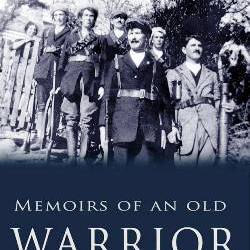
Raid on Captain Morgan's, Bunalun, Skibbereen:
During 1918, I had organised and kept a Company of Volunteers on frequent drilling parades at Dreeny Bridge, Skibbereen. Captain Morgan of Bunalun had become very aggressive to his workmen, telling them "many Irishmen would get a chance of going to heaven out of the trenches". We decided on getting his wind up by raiding his home for sporting guns, at about 10.50 a.m. one morning we disguised ourselves, and held up workmen in Morgan's yard at about 1.30 p.m. at point of revolver. We got four sporting guns and a box of cartridge caps in this raid.
- Thomas Hourihane
http://www.bureauofmilitaryhistory.ie/reels/bmh/BMH.WS1366.pdf#page=8
The counter-offensive from July 1918 results in successive defeats inflicted by French, British, and American forces as the Allies begin to integrate tanks and airplanes into operations, eventually forcing the German Supreme Command to decide to request a ceasefire.
By the end of June there are reports that the flu has reached Ballinasloe, Tipperary, Dublin, Derry and Cork, yet by mid-July the first wave of the pandemic abates.
Showing the Highest Mortality from Principal Epidemic Diseases during LIKJ period 1864-1918, as compared with that from Influenza in 1918.
Cause of Death Year Number of Deaths
Whooping-cough 1868 2,380
Small-pox 1872 3,248
Diphtheria 1874 565
Scarlet Fever 1874 4,034
Measles 1878 2,212
Typhus 1880 934
Enteric Fever ... 1898 1,284
Influenza 1918 10,651
In Cork, 469 people die of influenza in 1918 (281 men and 188 women), a rate of 149 per 100,000 of population
- Sir William J. Thompson, M.D., Registrar-General (1919)
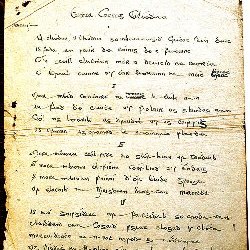
Poem in Irish in the hand of Tomás MacCurtain entitled 'Eachtra Carraig Clíodhna', July 1918 (Cork City Archives)
Daniel Buckley, of Boherbue, Co. Cork, who survived the sinking of the Titanic joined the famous Irish ‘Fighting 69th’ (the 69th Infantry Regiment) in New York and is killed in action in the advance that broke through the German lines. Brigadier General Douglas MacArthur said ‘By God, it takes the Irish when you want a hard thing done!’
July 3 – Lord Lieutenant bans Sinn Féin, the Irish Volunteers, the Gaelic League and Cumann na mBan for being “a grave menace to and are designed to terrorise the peaceful and law-abiding subjects of His Majesty in Ireland”.
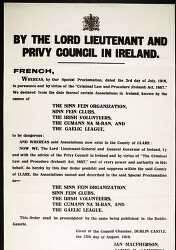
The Siberian Intervention is launched by the Allies to extract the Czechoslovak Legion from the Russian Civil War

July 4 – At Washington's grave at Mount Vernon, the tenor John McCormack stood beside President Wilson and sang, The Battle Hymn of the Republic and The Star Spangled Banner, as representatives of 33 nations laid wreaths
Mehmed VI succeeds as Sultan of the Ottoman Empire on the death of his half-brother Mehmed V (Reşâd, who reigned since 1909), himself reigning until the Sultanate is abolished in 1922
July 7 – Jamie Moynihan is officer commanding the group of Volunteers who carry out the armed attack on crown forces at the Mouth of the Glen, near Ballingeary

July 9 – Train wreck in Nashville, Tennessee, when an inbound local train collides with an outbound express, killing 101
July 10 – Russia adopts a new constitution declaring it a Soviet republic
July 12 – The Imperial Japanese Navy battleship Kawachi blows up off Tokuyama, Yamaguchi, western Honshu, Japan, killing at least 621
Pablo Picasso marries Olga Khoklova in Paris
July 13 – The National Czechoslovak Committee is established
July 14 – Release in the United States of the film The Glorious Adventure featuring Mammy Lou who becomes one of the oldest people ever to star in a film, at a claimed age of 114
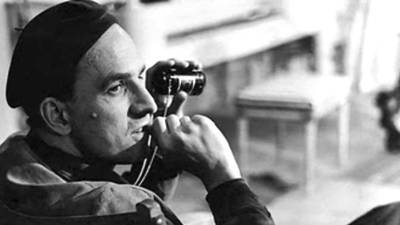
Ingmar Bergman is born (d. 2007)
July 15 – Second Battle of the Marne begins near the River Marne with a German attack
July 17 – RMS Carpathia (famed for rescuing survivors of the RMS Titanic) is torpedoed and sunk en route to Boston, approximately 120 miles west of Fastnet, by Imperial German Navy submarine U-55, 218 of the 223 on board are rescued
USS Terry and the British sloopHMS Zinnia escorted the submarine tender USS Bushnell from Berehaven to Queenstown


By order of the Bolshevik Party and carried out by the Cheka, former emperor Nicholas II, his wife Alexandra Feodorovna, their children, Olga, Tatiana, Maria, Anastasia, and Alexei, and retainers are shot at the Ipatiev House in Ekaterinburg, Russia
July 18 – Nelson Mandela is born in the village of Mvezo in Umtata
July 21 – U-156, captained by Richard Feldt, surfaces and fires on the town of Orleans, Massachusetts, the first time the U.S. mainland had been attacked since the War of 1812

July 26 – Major Edward Corringham "Mick" Mannock, the fifth highest scoring pilot of the war and a supporter of Irish nationalism is shot down by enemy ground fire at Calonne-sur-la-Lys. He was 31 years of age. His 61-73 “kills” makes him the Allies first or second highest scoring ace of the war
July 27 – Albert "Ginger" Goodwin, an advocate for workers rights in Canada, is shot in the neck and killed by disgraced ex-policeman Dan Campbell

July 30 – Journalist and poet Joyce Kilmer is killed in action near Muercy Farm, beside the Ourcq River (b. 1886)

July 31 – Captain George Edward Henry McElroy, a leading Irish-born fighter pilot with the RFC and the RAF is shot down by ground fire over Laventie, aged 25. His 47 “kills” places him 6th in the list of Allied aces and 15th in the overall list of WWI fighter aces.
1 note
·
View note
Text
US Masters
Those pesky members of Augusta always tended to annoys golf aficionados with its limited golf coverage. Unlike most other golf tournaments where coverage began the second the first three golfers teed off, with the Masters we are restricted to limited live coverage the first two days meaning those that like a flutter try in vein to follow their golfers progress around the most iconic venue in the sport. However we shouldn't complain as now the Masters represents the only live golf coverage in the UK on terrestrial TV albeit only the Saturday and Sunday.
Finding the winner here is easier than most tournaments as you can normally rule out a third of the field on account of age and pedigree. That makes Paddy Power’s decision to pay each way the first eight places manna to heaven for those that know their Jason Day from their Darren Day.
Rory at 8/1 will likely be Paddy Powers biggest liability come tee off but this course has a funny habit of spooking great golfers and maybe 2011 will turn out to be as close as he gets. Johnny Miller and Greg Norman never won here and the pressure of wanting this too much seems to cause Rory to try too hard and make mistakes. Also his A game was always assumed to be better than any other golfer could aspire to but suddenly Dustin Johnson is the king of the fairway. Jordan Spieth was second, first and second in his three appearances and he could have won all three. At least he has a one win here though unlike Rory and whilst his own demons of the 12th last year may slow him down, he looks the most solid each way bet at 7/1 as I can’t see him totally out of the frame.
Often times though when having a flutter emotion can wrongly creep in. Arnold Palmer will be missing for the first time. No doubt emotional scenes will occur when Jack Nicklaus and Garry Player tee off on Thursday without their friend and icon of the sport . Shame we won’t see it live though.Palmer claimed four Masters titles and Phil Mickelson at 25/1 will be chasing his own fourth green jacket could get inspired by the occasion. Worth adding to your portfolio for the week if getting involved.

National League finals
Drama in abundance. You could not have asked for a better end to the league season. Dublin rallied again from a tough position , Mayo showed serious heart whilst Galway and Tipperary got the crucial results under extreme pressure. Having tipped up both to get promoted alongside Dublin to win the Division 1 title and Westmeath to win Division 4 at 16/1 I’m hopefully a few followed me. Kerry and Wexford could still spoil the party this weekend. As for Galway v Kildare this weekend, it's a chance to play in Croker, banish some of the demons from last years quarter finals and add some silverware before their Connacht defence. Let’s not blow them up too much too fast but interestingly they are rated the sixth best team in the country right now according to the betting ahead of the likes of Monaghan who had Dublin in serious trouble on Sunday. Time for calm. Galway are 10/11 to beat Kildare this weekend.
Grand National
Definitly Red was 16/1 last week but the plunge horse could go off favourite on the day. He demolished last year's runner up The Last Samurai in his last race and if the handicapper could reassess his mark, he’d be carrying near top weight instead of 10-11. The Irish dominated Cheltenham and if there’s one horse the bookies fear most it’s Cause of Causes. Once a runner up in the Galway Hurdle, the Gordon Elliott horse has won at the three Cheltenham festivals and will relish every yard of the extreme trip.
0 notes
Text
#OTD in 1920 – Irish War of Independence | In Dublin, 31 people are killed in what became known as ‘Bloody Sunday’.
#OTD in 1920 – Irish War of Independence | In Dublin, 31 people are killed in what became known as ‘Bloody Sunday’.
A day of carnage in Dublin in an increasingly bitter and bloody Irish War of Independence; in total, 31 people were killed. Early in the day, Michael Collins ‘Squad’ and the Dublin Brigade wipes out much of British Intelligence in Dublin. Hours later, British troops take horrible revenge.
In a superbly executed guerilla operation, Michael Collins dispatched his agents to assassinate fourteen…

View On WordPress
#Auxilliaries#Bloody Sunday#Croke Park#Dublin Brigade#Dublin Castle#Dublin V Tipperary#England#Ireland#Irish History#Irish War of Independence#Michael Collins#Michael Hogan#RIC#The Cairo Gang#The Squad
15 notes
·
View notes
Text
#OTD in 1920 – Irish War of Independence: In Dublin, 31 people are killed in what became known as ‘Bloody Sunday’.
#OTD in 1920 – Irish War of Independence: In Dublin, 31 people are killed in what became known as ‘Bloody Sunday’.
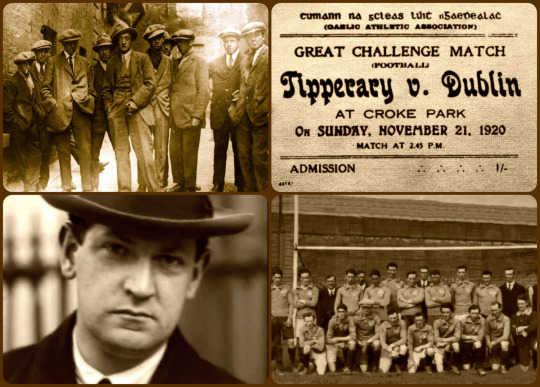
A day of carnage in Dublin in an increasingly bitter and bloody Irish War of Independence; in total, 31 people were killed. Early in the day, Michael Collins ‘Squad’ and the Dublin Brigade wipes out much of British Intelligence in Dublin. Hours later, British troops take horrible revenge.
In a superbly executed guerilla operation, Michael Collins dispatched his agents to assassinate fourteen…
View On WordPress
#Auxilliaries#Bloody Sunday#Croke Park#Dublin Brigade#Dublin Castle#Dublin V Tipperary#England#Ireland#Irish History#Irish War of Independence#Michael Collins#Michael Hogan#RIC#The Cairo Gang#The Squad
19 notes
·
View notes